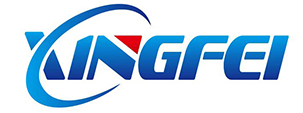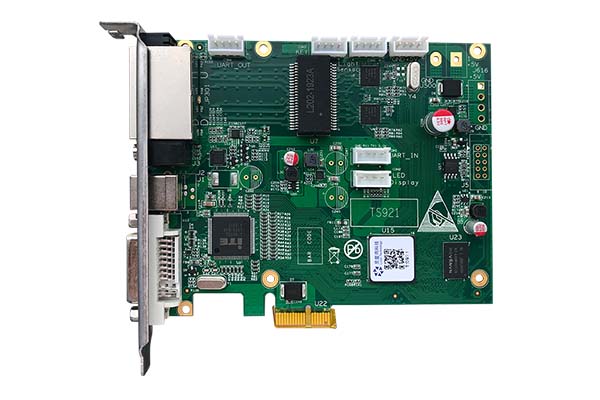
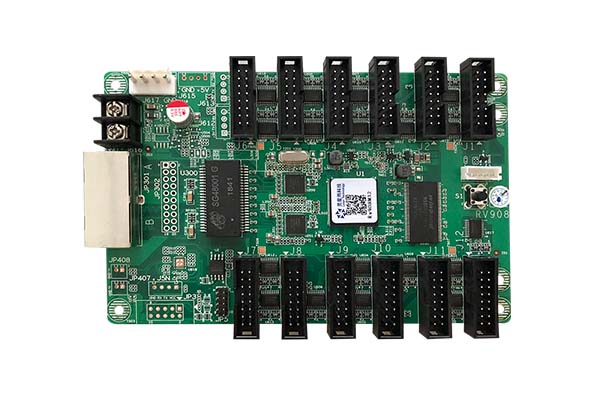
Rv908M32
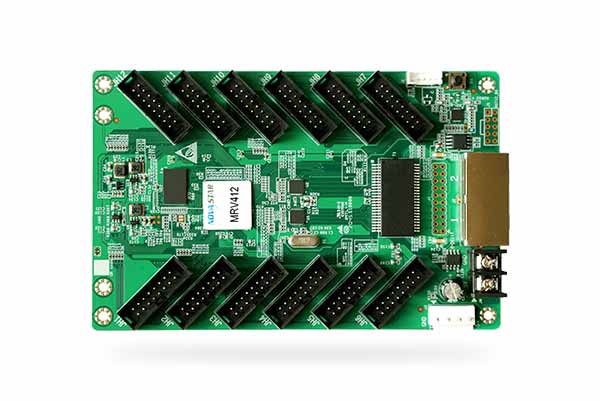
LED RECEIVER
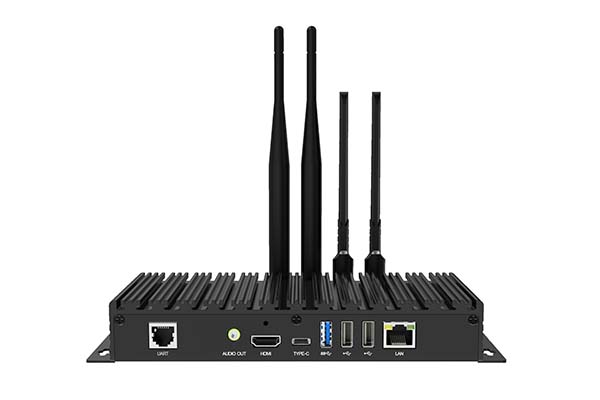
LED MEDIA PLAYER
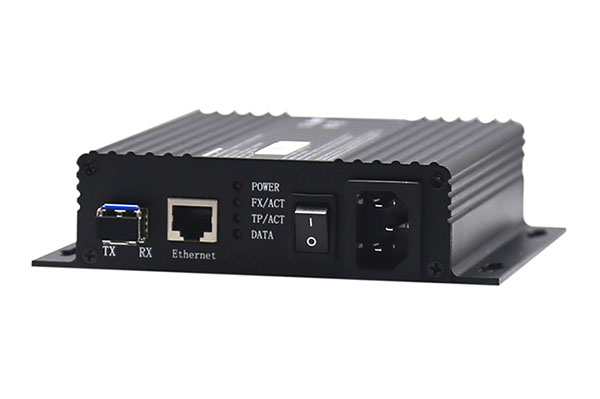
LED Accessories
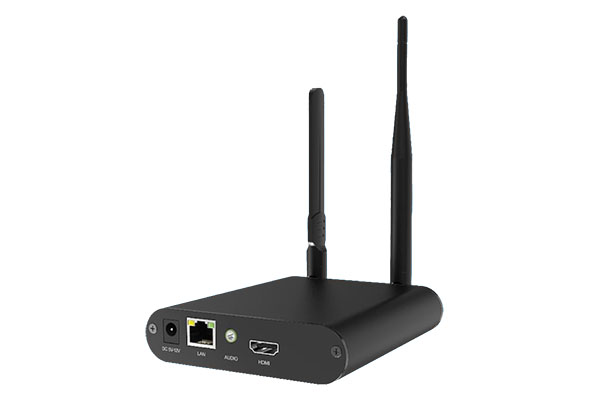
Colorlight A2K media player
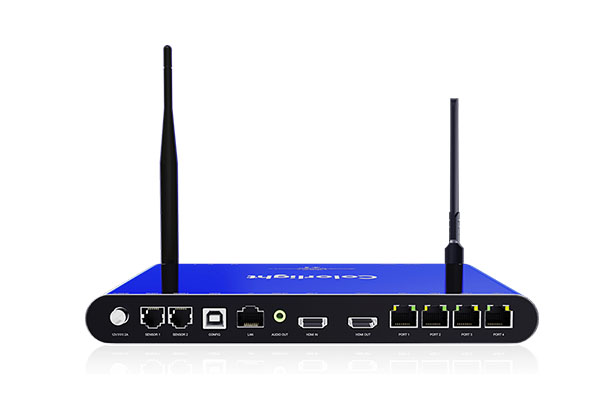
Colorlight A200 media player
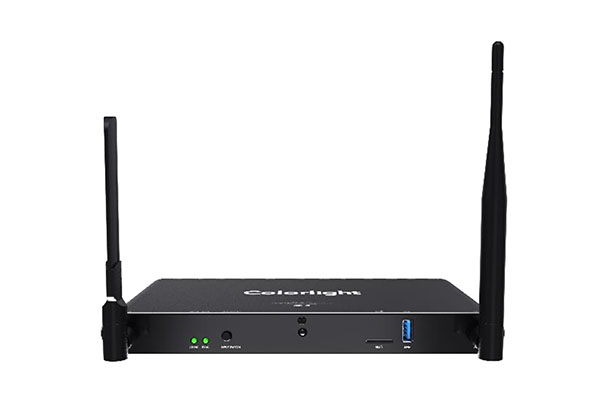
Colorlight A100 media player
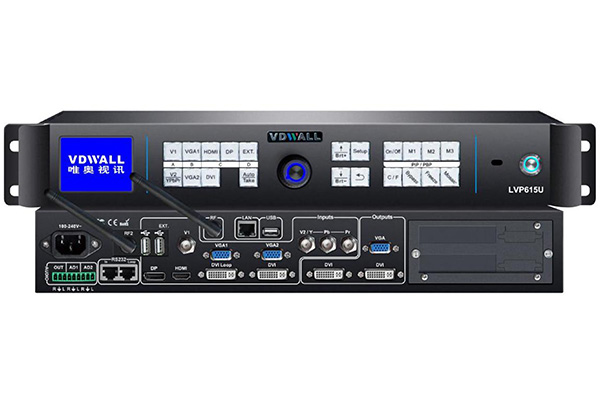
LVP615U Video processor
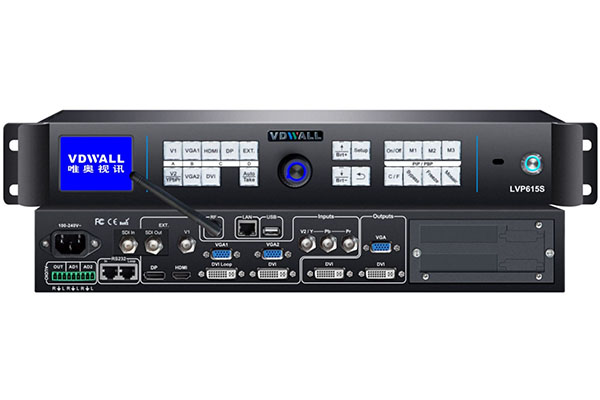
LVP615S Video processor
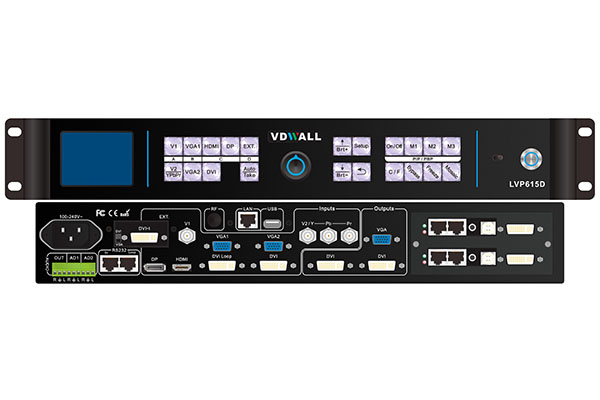
LVP615D Video processor

LVP615 Video processor
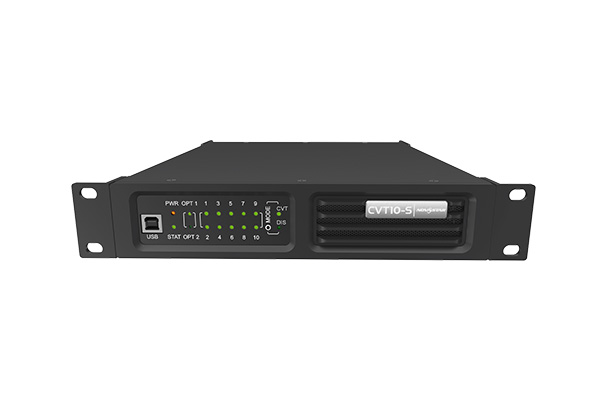
CVT10-S

LED RECEIVER
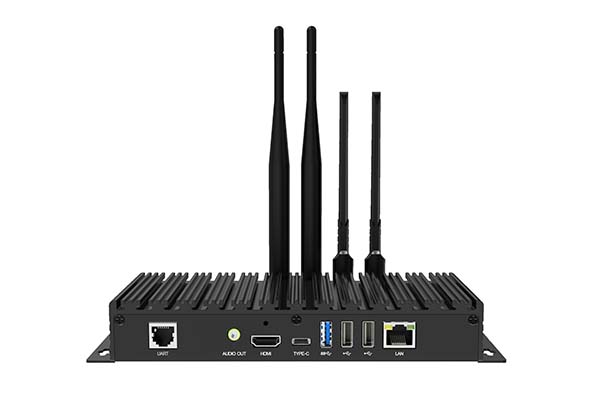
LVP615U Video processor

LVP615U Video processor
Everything you need to know about LED Control Card:
1. What is LED Control Card?
2.What is LED Receiving Card?
3. How does the LED display controller work?
4. Synchronous control and Asynchronous control
5.Synchronized control:
6.Asynchronous control:
7.Points of difference:
8. Same point:
9. Common faults and solutions of LED screens
10. LED Control card brands:
11.Novastar VS Linsn VS Colorlight VS Huidu,
12.Which Brand Should You Choose?Which is the best one?
1. What is LED Control Card?
LED control card is a device used to control the LED display.It can convert the signals sent by computer or other signal sources into the electrical signals required by the LED display to drive the display to work properly.The controller usually has a variety of functions, such as grayscale control, brightness adjustment, color correction, image scaling and so on, in order to ensure that the LED display display effect and quality.
In addition, the controller can be programmed to achieve a variety of dynamic effects and text animation, in order to enhance the visual effect and attraction of the LED display.In some cases, the controller can be controlled and managed remotely by the local area network (LAN), which is convenient for the user to carry out the maintenance and management.The LED display controller is an important part of the LED display, which can improve the performance and effect of the LED display.
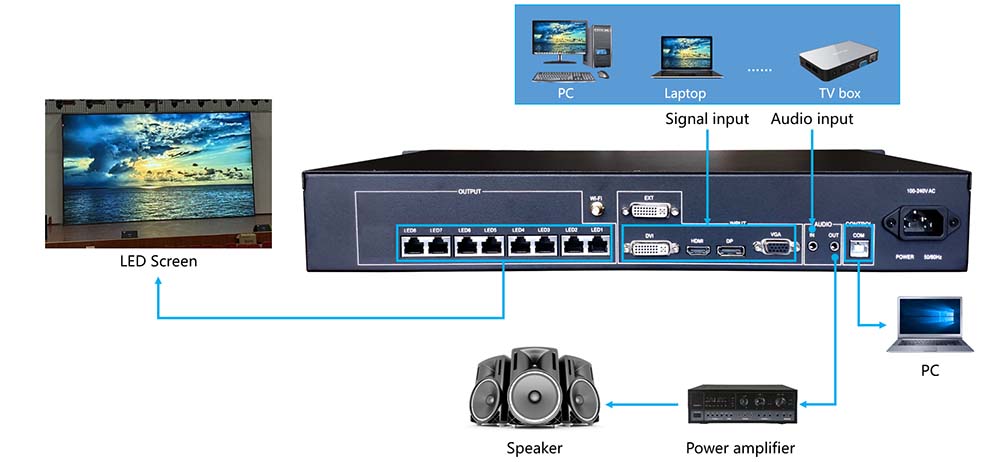
1.1 What is LED Receiving Card?
The LED display receiving card is a part of the LED display system, which is responsible for receiving the signal from the sending card and converting it into a signal suitable for the LED display drive. To put it simply, the receiving card plays the role of a signal relay, converting the signal sent by the main controller or computer into a format that can be understood and displayed by the LED display. It is one of the key links to ensure the normal operation and display effect of the display screen.
2. How does the LED display controller work?
The working principle of LED display controller can be summarized into three main steps: signal reception and processing, image data conversion and drive output.
First, the controller receives image and data information from a computer or other signal source.
It then processes and parses this information into a format suitable for LED display drives.
Finally, the controller sends the processed image data to the LED display through the output port, thereby driving the pixels on the display to light up and realize the display of images and text. During the whole process, the controller is also responsible for adjusting parameters such as brightness and color to ensure the quality and accuracy of the display effect.
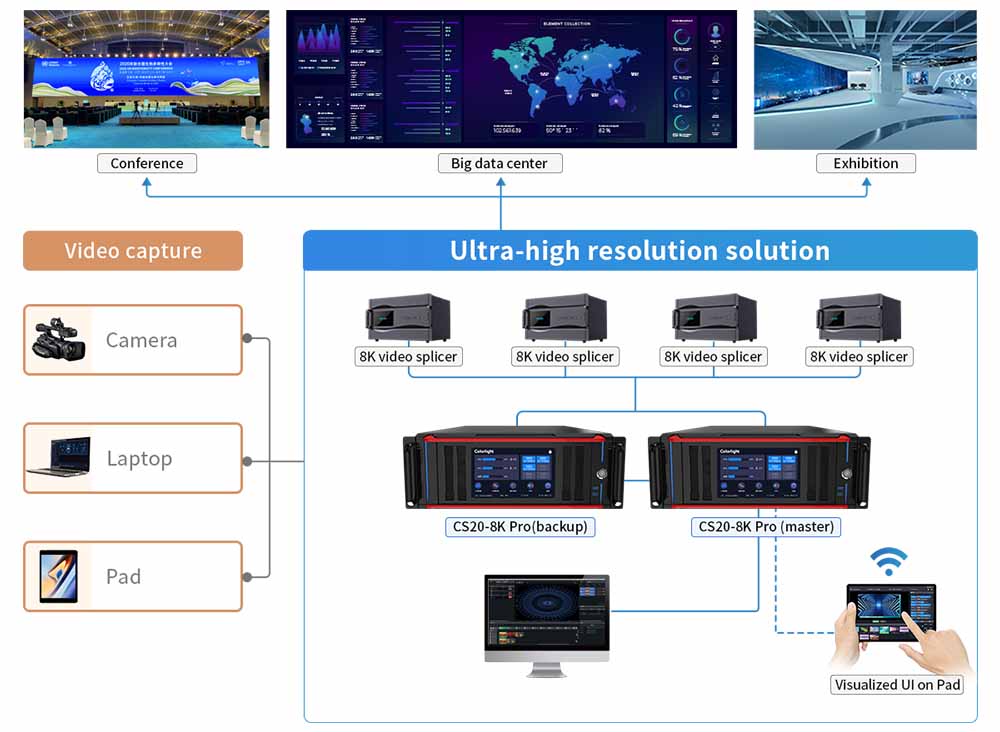
3. Synchronous control and Asynchronous control
LED controllers have two main control modes: synchronous control and asynchronous control. these two control modes are different in terms of working principle, usage scenarios and characteristics, but they also have some similarities.
3.1 Synchronized control:
In synchronized control mode, the controller of the LED display works synchronously with the computer or other image signal source, which relies on the external signal source to provide image and data information.When the signal source sends image data, the synchronized controller receives and processes these data in real time, then converts them into a format suitable for the LED display and drives the display to display.Therefore, in this mode, the display content of the LED display corresponds to the image content of the signal source in real time.
3.2 Asynchronous control:
Unlike synchronous control, the LED controller under asynchronous control does not need to rely on an external signal source in real time. it can receive and store image and data information in advance, and then autonomously drive the LED display to show it when it is needed. this means that even if the signal source is disconnected, the asynchronous controller can still drive the display to show the previously stored content. asynchronous control is therefore more suitable for display applications that are stand-alone and do not need to be updated in real time.
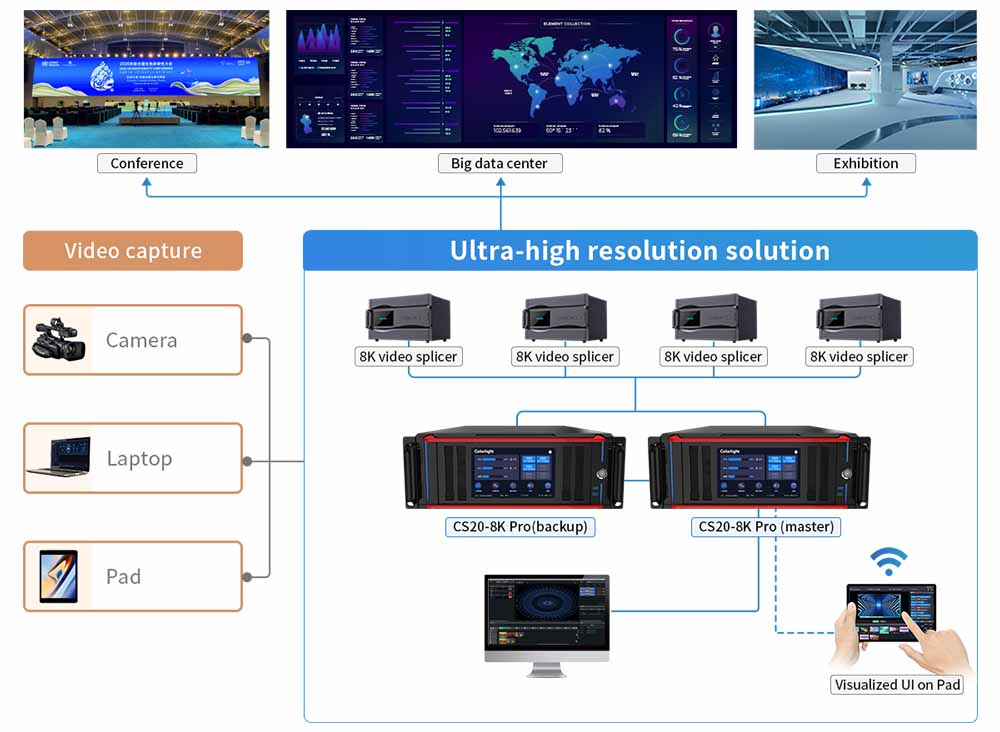
3.3 Points of difference:
Synchronous control is dependent on the signal source in real time, and asynchronous control can work independently.
Synchronous control is used where real-time updates are required, and asynchronous control is used for stand-alone, pre-programmed applications.
3.4 Same point:
Both require converting the received image and data information into a format that the LED display can understand.
Both are responsible for adjusting parameters such as brightness and color to ensure the display.
To sum up, synchronous control and asynchronous control have their own advantages, which way to choose depends on the specific application requirements and scenarios. no matter which way to choose, the LED controller is the key link to achieve high-quality LED display.
4. Common faults and solutions of LED screens
During the use of full-color LED display devices, it is inevitable to encounter malfunctions at times. Today, we will introduce how to distinguish and determine the fault diagnosis method of full-color LED display screens.
Step 1: Check if the graphics card settings section is set properly. The setting method can be found in the electronic file of the CD, please refer to it.
Step 2: Check the basic connections of the system, such as DVI cables, network cable sockets, connection between the main control card and the computer PCI slot, serial cable connection, etc.
Step 3: Check if the computer and LED power system meet the usage requirements. When the power supply of the LED screen is insufficient, approaching white (high power consumption) will cause the screen to flicker. A suitable power supply should be configured according to the power supply requirements of the box.
Step 4: Check if the green light on the sending card flashes regularly. If it does not flash, go to step 6. If it does not, restart and check if the green light flashes regularly before entering the Windows system. If it flashes, go to step 2 and check if the DVI cable is connected properly. If the problem is not solved, replace the sending card, graphics card, and DV cable I separately and repeat step 3.
Step 5: Please follow the software instructions to set up or reinstall before setting up until the green light on the sending card flashes. Otherwise, repeat step 3.
Step 6: Check if the green light (data light) on the receiving card is flashing synchronously with the green light on the sending card. If it is flashing, turn to Step 8 and check if the red light (power) is on. If it is on, turn to Step 7 and check if the yellow light (power protection) is on. If it is not on, check if the power supply is reversed or there is no output. If it is on, check if the power supply voltage is 5V. If it is on, turn off the power supply, remove the adapter card and ribbon cable, and try again. If the problem is not solved, it is a receiving card fault, Replace the receiving card and repeat step 6.
Step 7: Check if the network cable is properly connected or too long (standard Category 5 network cables must be used, and the longest distance of network cables without repeaters is less than 100 meters). Check if the network cable is made according to the standard (please refer to installation and settings). If the problem is not solved, it is a faulty receiving card. Replace the receiving card and repeat step 6.
Step 8: Check if the power light on the large screen is on. If it is not on, go to Step 7 and check if the adapter card interface definition line matches the unit board.
Attention: After most screens are connected, there is a possibility of some parts of the box having no image or a blurred screen. Due to the loose connection of the RJ45 interface of the network cable or the lack of connection to the power supply of the receiving card, the signal may not be transmitted. Therefore, please unplug and plug in the network cable (or replace it), or plug in the power supply of the receiving card (pay attention to the direction) to solve the problem
After reading the above introduction, do you have more experience in diagnosing and handling LED electronic display screen faults? If you want to learn more about LED display screen related knowledge, please follow us.
5. LED Control card brands: Novastar VS Linsn VS Colorlight VS Huidu,
Which Brand Should You Choose?Which is the best one?
There are many brands in the LED display controller market, among which the well-known ones are Linsn, Novastar, Colorlight, Huidu, etc. The following is a brief introduction to these brands and their main product models.
5.1. Linsn Tech
As a leading brand in the field of LED display control in China, Linsn’s products have a high level of popularity and reputation in the market. Lingxingyu focuses on technological research and innovation, possesses multiple patents and core technologies, and its products cover multiple aspects from signal processing, image processing to intelligent control.
Main product model features:
X series: High end product, suitable for large outdoor LED display screens, with high refresh rate and grayscale level, supporting high-resolution and multi screen display.
TS series: mid to high-end products, suitable for outdoor and indoor high-end applications, with excellent color reproduction and stable signal processing capabilities.
L series: mid to low-end products, suitable for conventional LED display screens, with the characteristics of simplicity, ease of use, stability, and reliability.
5.2. Novastar
As one of the well-known brands in the field of LED display control in China, Novastar’s product line covers various fields from low-end to high-end. Nova Nebula focuses on technological innovation and product research and development, and has multiple patents and core technologies. Its products also have high competitiveness in the market.
Main product model features:
COEX series: High end product, suitable for outdoor advertising applications, with high brightness and refresh rate characteristics, supporting multi screen and irregular display.
VX series: mid to high-end products, suitable for high-end indoor applications, with excellent image processing capabilities and low noise working characteristics.
Taurus series: mid to low-end products, suitable for conventional LED displays, with the characteristics of simplicity, ease of use, stability, and reliability.
5.3. Colorlight
Colorlight is one of the well-known brands in the field of LED display control in China, and its product line covers various fields from low-end to high-end. Carlett emphasizes the stability and reliability of its products, and its products also have high recognition in the market.
Main product model features:
X series: mid to high-end product, suitable for outdoor and indoor LED display screens, with high refresh rate, high grayscale level, and excellent color reproduction. Supports multi screen and irregular display.
Z series: mid to low-end products, suitable for conventional LED display screens, with the characteristics of simplicity, ease of use, stability, and reliability. This series of products has a moderate price and a high cost performance ratio.
S series: A product series developed for the education industry, characterized by simplicity, ease of use, and easy maintenance. Especially suitable for use in schools, training institutions, and other places.
5.4. Huidu
Huidu is one of the well-known brands in the field of LED display control in China, with a product line covering various aspects from signal processing to intelligent control. Grayscale Technology focuses on product innovation and technological leadership, and its products also have high competitiveness in the market.
Main product model features: HDVP series: high-end product, suitable for large outdoor LED display screens with high refresh rate, high grayscale level, and support for high resolution. At the same time, this series of products also has strong image processing capabilities and intelligent control functions, which can meet the needs of multi screen display and irregular display. In addition, grayscale technology products also have some other unique functions, such as supporting multiple signal interfaces and network remote control, which makes this series of products highly competitive in the high-end market.
In summary, different brands of LED display screen controllers have their own advantages and characteristics. The main difference lies in their technological research and development capabilities, product performance, price positioning, market share, and other aspects. In addition, each brand has its own flagship products and service areas, which is also an important symbol that distinguishes it from other brands. In short, when selecting LED display screen controllers, it is necessary to conduct a comprehensive evaluation based on actual needs to choose a suitable brand and product model.
